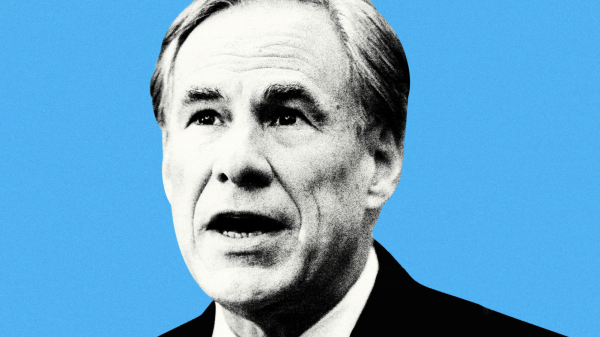Escape Into the Wilderness … or Not
November 30, 2021
Crowded roads. Needed reservations. Hopeless circling to find parking spots. Sadly, this has become a common experience in some of America’s national parks.
The National Park Service (NPS) recorded more than 3.13 million visitors in May of 2021, which is an increase of 115% from May 2020. There has been a long-term trend of growing numbers with the amount of visitors doubling since 1980 in Glaciers and Yellowstone. However, the surging quantity has accelerated due to the pandemic and lockdown. In June, Grand Teton saw a 20% increase in visitors over 2019. In September, Yellowstone already had over 4 million visitors in a single year.
With more visitors, comes an increase in litter, pollution, defacement of Native American artifacts, and more. Trail use has increased. More people are in the backcountry. Greater vehicle congestion means greater noise and air pollution. In Yellowstone, “bison jams” can be common, causing mile-long bumper-to-bumper traffic on the 2-lane road. Excited to see the wild animals, visitors leave their cars, hoping to get a closer look. This puts themselves and the animal in greater danger and has resulted in human-animal encounters. When crowds are not properly managed, many ecological impacts occur. For example, going off the built walkways in Sequoia National Park can harm the shallow root system of the ancient trees. Studies conducted in Guadalupe Mountains National Park and the Great Smoky Mountains have found that erosion is more common with the increase in surrounding land disturbance There is an alteration in the soil’s ability to absorb water, causing erosion to occur more frequently. In turn, destroying trails and requiring them to be constantly maintained and fixed, tapping into an already dwindling pool of funding. Evidently, immediate action is needed before it is too late to mitigate the damages.
This past summer, many national parks have used a reservation system or a ticket entry system to regulate the crowd. Acadia National Park required reservations for the famous Cadillac Summit road to fit its 170 parking spots. Glaciers National Park and Rocky Mountain National Park required reservations for all of their entries. Kevin Garland, the executive director of the Chamber of Commerce in Whitefish, Montana said, “[Visitors] traveled thousands of miles, made tens of thousands of dollars in hotel and airfare and rental car reservations, only to see their vacation ruined because they can’t get that $2 ticket to see Glacier National Park.” He presents the frustration of the lack of knowledge concerning the reservations system, making it hard for some visitors to secure a spot. Furthermore, large crowds present safety concerns for certain trails. In Zion National Park, the popular Angel’s Landing trail is known for its steepness, narrow ridge, and 1,000-foot drops on both sides. With these safety concerns in mind, the park is considering using permits and a daily lottery to regulate the number of people hiking the trail. In the long run, parks are looking to implement some sort of reservation system to manage their record-breaking crowds.
A recent opinion piece published in the New York Times presents another solution. They argue for the establishment of more national parks, saying that since there is an increase in demand, the supply should change to meet this demand. However, only a select handful of the most popular parks have truly seen an increase in visitor numbers, including Zion, Arches, and Glaciers. This prompts others to propose increased funding to the park service so the parks that experience an increase can manage these crowds better by building more infrastructure, enacting a public transportation system, or establishing more trails. In recent years, the NPS has experienced a cut in funding, making it harder for them to address all the problems. With more funding, park managers can reach the conservation goals that they are currently failing to meet. In addition, NPS has always been largely understaffed, so hiring more rangers, administrative staff, and scientists is a necessity. Different solutions have been proposed to meet the overcrowding in national parks, no matter how the National Parks Service proceeds, they must address the growing crowds and problems that come along with them.
As Senator Angus King of Maine puts it, the future of the national parks is caught in a paradox. The national park system is meant to protect the land while showcasing America’s beauty to its visitors. Doing both is the trickiest part of it all.
Sources:
- https://www.landdesk.org/p/no-more-national-parks-wont-solve
- https://www.bloomberg.com/news/articles/2021-07-29/national-parks-are-so-crowded-that-congress-is-getting-involved
- https://www.cnbc.com/2021/08/22/national-parks-are-booming-that-may-ruin-your-next-trip.html
- https://www.wsj.com/articles/national-parks-reservations-glacier-rocky-mountain-11632332568
- https://www.theguardian.com/environment/2018/nov/20/national-parks-america-overcrowding-crisis-tourism-visitation-solutions
- https://www.thrillist.com/news/nation/grand-teton-yellowstone-national-parks-visitors-record-levels
- https://www.thecgo.org/benchmark/bringing-ecotourism-to-crowded-national-parks/



Julia Koch • Jan 14, 2022 at 9:32 am
Angie, I love your writing style–the punchy sentences kept me engaged! Well done!
Sophie O’Connor • Jan 12, 2022 at 2:51 pm
Angie!! This was so interesting and well-written!